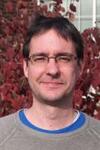Peter Orth
We study the static and dynamical properties of a number of strongly correlated quantum many-body systems, that can be experimentally realized using cold-atoms. In the first part of the thesis, we investigate various quantum spin systems that interact with their environment, which we model as a bath of harmonic oscillators. Coupling to the bosonic bath modes induces a phonon-mediated ferromagnetic interaction between the spins. It also introduces decoherence and dissipation as a result of spin-bath entanglement. We extensively study the effect of dissipation on a single spin, two spins and the quantum Ising model, focusing on universal properties. Static properties become universal close to a quantum phase transition, where dissipation profoundly affects the scaling behavior. Universal dynamics occurs in the scaling limit, where the bandwidth of the bath ωc becomes large.
For a single spin, we study the famous Landau-Zener level crossing problem in the presence of dissipation. Interaction with the bath leads to universal decay from the upper to the lower spin state, even far away from the resonance. The timescale to reach the final Landau-Zener spin transition probability is determined by the large parameter ωc. To address this strongly driven non-equilibrium problem, we devise a novel non-perturbative stochastic Schrödinger equation method, based on a real-time functional integral description. This approach is particularly well-suited to study time-dependent bias fields, both at zero and finite temperature.
We also investigate a system of two Ising-coupled quantum spins, that are embedded in a common bosonic bath. To study the ground state phases for an Ohmic and a sub-Ohmic bath, we employ a combination of non-perturbative analytical and numerical renormalization group (NRG) methods. We discuss a number of different non-equilibrium situations, mainly using the time-dependent NRG. Most interestingly, spin oscillations may synchronize due to the proximity of a common bath, even at weak spin-bath coupling. We point out similarities and differences to the dynamics of the single-spin-boson model, and provide quantitative limits on the applicability of the perturbative Bloch-Redfield approach.
The quantum Ising model exhibits a quantum phase transition from a paramagnetic to a ferromagnetic state. The universality class of the transition is known to change in the presence of Ohmic dissipation resulting in different critical exponents. We suggest an experimental cold-atom setup comprising a bosonic mixture in state-selective trapping potentials where critical exponents can be measured using common time-of-flight imaging techniques.
In the second part of the thesis, we study how novel quantum phases may emerge in cold-atom gases subject to an optical lattice. We show that the intriguing supersolid phase, that combines density wave with superfluid order, arises at low temperatures in Bose-Fermi mixtures on 2D lattices in the presence of a nested Fermi surface. Nesting induces a density wave instability for the fermions. The density wave order is imprinted on the superfluid bosons via the boson-fermion interaction. At weak interaction, supersolidity competes with phase separation and we calculate the low temperature phase diagram for two concrete examples 87Rb40K and 23 Na6Li in various lattice geometries. We identify the 2D square lattice to be the optimal geometry to experimentally realize and detect a supersolid phase.
